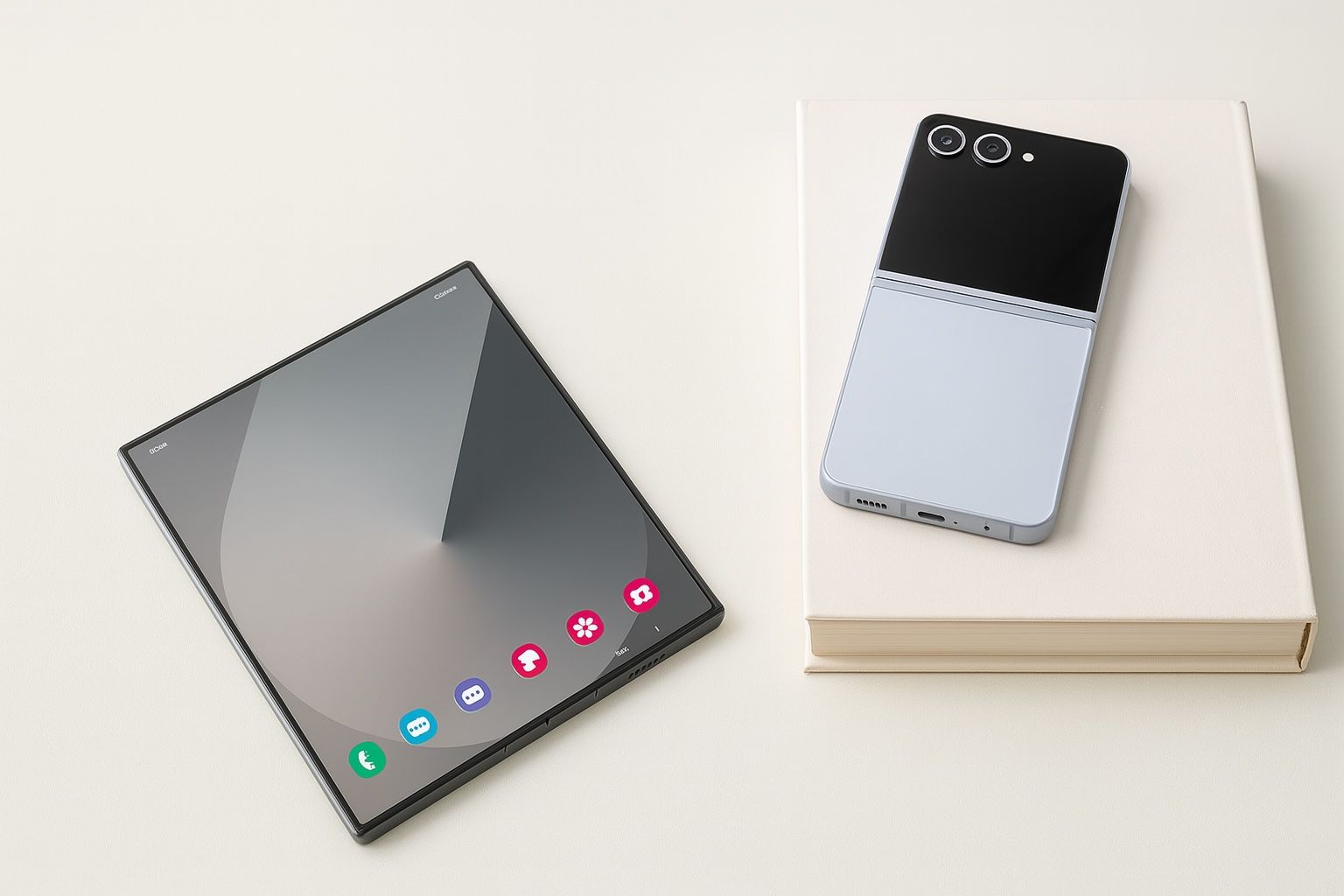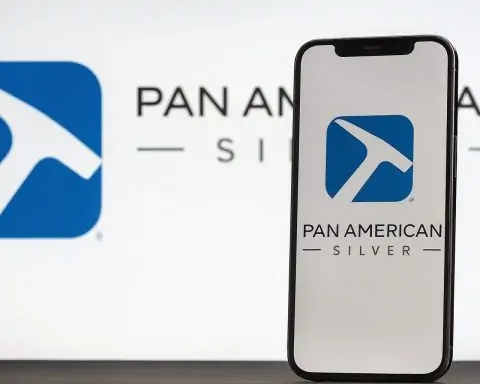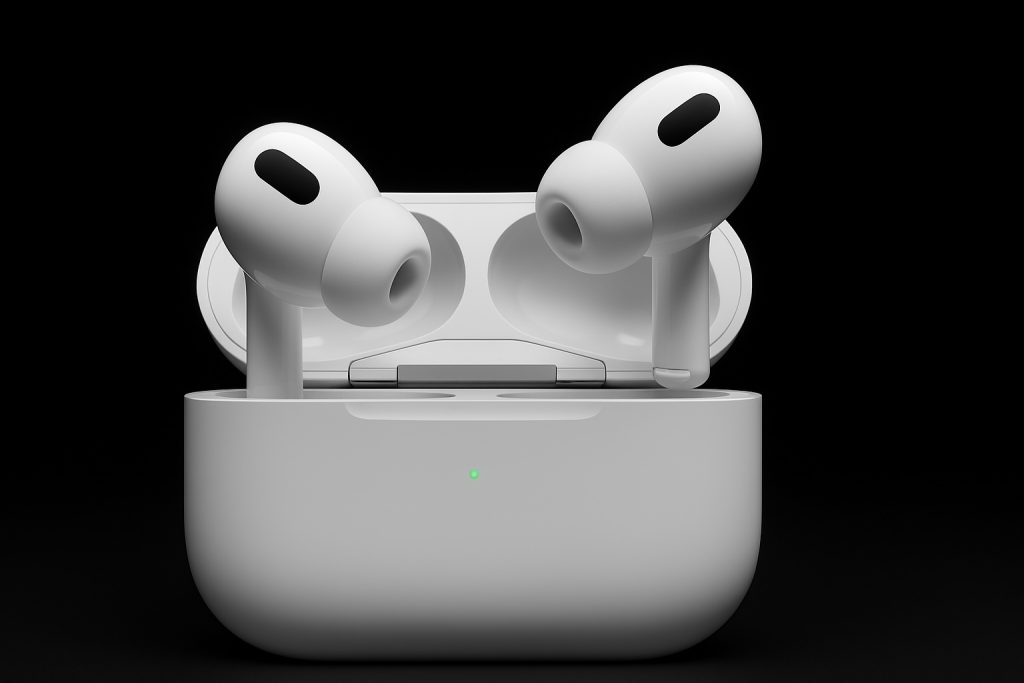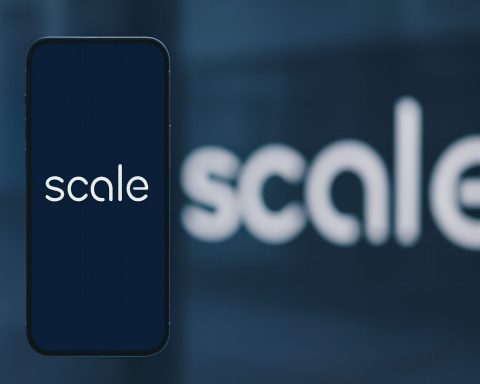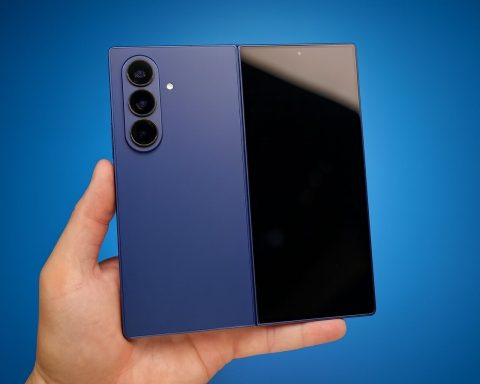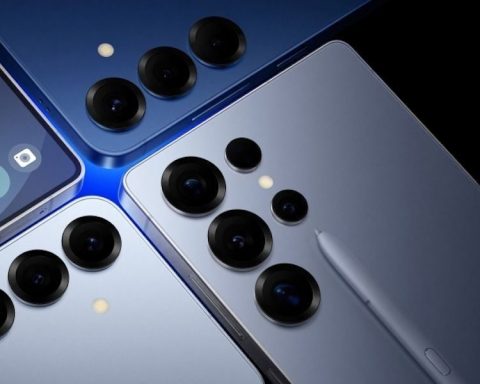- Samsung announced the Galaxy Z Fold7 at its July 2025 Unpacked event in New York, unveiling an 8.0-inch inner display, a 10% lighter chassis than the Fold6, a Snapdragon 8 Elite Gen 3, and a starting price of $1,999.
- Huawei Mate X5 (China-only) features a 7.85-inch inner OLED display (120Hz), a 6.4-inch cover OLED, the Kirin 9000S 5G chip, and is priced around ¥6,799 (about $950) in China.
- Honor Magic V2 is 9.9 mm thick folded and weighs about 231 g, uses a dual-battery titanium frame, launched globally in early 2024, priced around £1,699 / €1,999 (about $1,800).
- OPPO Find N3 Flip, launched globally in late 2023, has a virtually invisible crease, a triple camera system (50 MP main, 48 MP ultra-wide, 32 MP 2× telephoto), a zero-gap hinge, and is priced around AED 3,999 (≈$1,090).
- Xiaomi Mix Fold 3 is rated for 500,000 folds, uses Leica co-engineered quad cameras including a 5× optical zoom periscope, and is 10.9 mm thick folded, priced around ¥8,999 (≈$1,240).
- Google Pixel 9 Pro Fold, released in August 2024, adopts a shorter, wider passport-style design and was praised for software and overall reliability as one of the best foldables.
- OnePlus Open, debuted in late 2023, weighs about 239 g, supports 67W fast charging, and starts at $1,699 for 16 GB RAM / 512 GB storage.
- Tecno Phantom V Fold, announced in 2023, features a 7.85-inch LTPO inner display and a 6.42-inch outer display, a MediaTek Dimensity 9000+ chip, and is priced around $1,099.
- Samsung Galaxy Z Flip7 and Flip7 FE illustrate the clamshell category, with Flip7 offering a near full-front 4.1-inch cover display and Snapdragon 8 Gen 3 at $1,099, while Flip7 FE uses Exynos 2400 at $899.
- Motorola expanded its Razr lineup in 2025 with Razr Plus at about $999, Razr Ultra at about $1,299, and base Razr at about $699.
Introduction: The Rise of Foldable Smartphones
Foldable smartphones have rapidly evolved from futuristic curiosities to a fierce battleground for major phone makers. In 2025, nearly every top brand – from Samsung and Huawei to Motorola, Oppo, Xiaomi, Honor and more – is vying to “unfold” the next big thing in mobile tech. These devices promise tablet-sized screens that bend into pocketable phones, all while packing cutting-edge specs and eye-popping innovations. This comprehensive report explores the current foldable lineup of 2025, compares key models and specs, rounds up the latest news and breakthroughs, and highlights what experts are saying about the state and future of foldable devices. We’ll also delve into market trends – including sales figures, consumer adoption, and the intensifying competition – and peek at the upcoming and rumored foldables that could redefine the game next. Get ready for the ultimate foldable phone showdown of 2025!
Foldable Smartphone Lineup 2025: Key Models and Specifications
Major manufacturers now offer two main styles of foldables: book-style foldables that open into a tablet-like display, and clamshell flip phones that fold into an ultra-compact size. Below, we compare the flagship models in each category, highlighting their screen sizes, hardware, and price points.
Tablet-Style Foldables (Book-Style Devices)
These larger foldables have a vertical hinge and unfold into mini-tablets. They typically sport around 7–8 inch flexible inner screens with 6+ inch outer displays. Flagship models come with top-tier processors and multiple cameras, aiming to replace both your phone and tablet. The table below summarizes key specs of leading book-style foldables in 2025:
Select Book-Style Foldable Phones (2025)
| Brand & Model | Unfolded Inner Display | Cover Display | Processor | Launch Price (USD) |
|---|---|---|---|---|
| Samsung Galaxy Z Fold7 | 8.0″ AMOLED (120Hz) [1] | 6.5″ AMOLED [2] | Snapdragon 8 Elite (Gen3) [3] | ~$1,999 (base model) [4] |
| Huawei Mate X5 | 7.85″ OLED (120Hz) [5] | 6.4″ OLED (est.) | Kirin 9000S (5G) [6] | ~¥6,799 (≈$950, China) [7] [8] |
| Honor Magic V2 | 7.92″ OLED (120Hz) | 6.43″ OLED | Snapdragon 8 Gen 2 [9] | £1,699 / €1,999 (≈$1,800) [10] [11] |
| OPPO Find N3 | 7.82″ OLED (1–120Hz LTPO) [12] | 6.31″ OLED [13] | Snapdragon 8 Gen 2 [14] | ~$1,400 (China) [15] |
| Xiaomi Mix Fold 3 | 8.03″ OLED (120Hz) [16] | 6.56″ OLED [17] | Snapdragon 8 Gen 2 [18] | ¥8,999 (≈$1,240) [19] |
| Google Pixel 9 Pro Fold | 7.6″ OLED (120Hz) | 5.8″ OLED | Google Tensor G4 [20] [21] | $1,799 (base model) [22] |
| OnePlus Open | 7.8″ OLED (120Hz) [23] | 6.3″ OLED (120Hz) | Snapdragon 8 Gen 2 [24] | $1,699 (16GB/512GB) [25] |
| Tecno Phantom V Fold | 7.85″ LTPO AMOLED (120Hz) | 6.42″ AMOLED | MediaTek Dimensity 9000+ | ~$1,099 (Emerging markets) |
Table: Top book-style foldables of 2025 – All feature large inner displays that fold in half, along with outer screens for phone use. Most run Qualcomm’s Snapdragon 8-series chips (except Huawei’s Kirin and Google’s Tensor). Prices range from around $1,000 to $2,000+, reflecting their premium positioning.
Despite similar form factors, each model brings unique innovations. Samsung’s Galaxy Z Fold7 is thinner and ~10% lighter than its predecessor, addressing the bulkiness issue common in foldables [26]. It offers a refined hinge, S-Pen stylus support, and water resistance, cementing Samsung’s lead in durability and multitasking software. Huawei’s Mate X5 (China-only) uses the in-house Kirin 9000S chip and advanced satellite connectivity [27], but like other Huawei phones, it lacks Google services. Honor’s Magic V2 is astonishingly thin – just 9.9mm when folded – and lightweight at ~231 g, thanks to a dual battery design and titanium alloy frame [28] [29]. The Magic V2 launched globally in early 2024, giving Europe a serious Samsung Fold competitor at a similar price [30] [31].
Oppo and Xiaomi have pushed camera and display tech. The Oppo Find N3 features a virtually invisible crease and was the first foldable tested to withstand 1,000,000 folds by TÜV Rheinland [32]. It packs a Hasselblad-branded camera system with a large 48 MP main sensor (Sony’s LYTIA-T808) and a 64 MP periscope telephoto lens – covering focal lengths 14mm to 70mm [33] [34]. Xiaomi’s Mix Fold 3 one-upped rivals in hinge durability, rated for 500,000 folds (far above the ~200k of Samsung’s 2023 Fold) [35]. The Mix Fold 3 also crammed in quad cameras co-engineered with Leica, including a 5× optical zoom periscope, all in a body just 10.9mm thick folded [36] [37] – thinner than the Galaxy Fold. Google’s Pixel Fold series (the second-gen Pixel 9 Pro Fold launched August 2024) opts for a shorter, wider design (“passport-style”) for easy one-handed use [38]. Reviewers praised Google’s foldables for their book-like aspect ratio and refined software, with one TechCrunch editor calling the Pixel Fold (and OnePlus Open) “the best on the market” as of early 2024 [39]. The OnePlus Open – debuting in late 2023 – is effectively Oppo’s foldable made global. It earned kudos for a robust yet lightweight build (~239 g) and 67W fast charging, delivering a best-in-class “two-in-one” device for power users [40] [41].
Clamshell Flip-Style Foldables (Compact Flips)
Clamshell foldables look like classic flip phones, with small squared-off form factors that flip open into full-size smartphones. These are more pocket-friendly (typically a 6.7–6.9 inch inner screen) and come at lower price points than the book-style models. They are hugely popular for their style and portability. Here’s a comparison of leading flip-style foldables in 2025:
Select Clamshell (Flip) Foldable Phones (2025)
| Brand & Model | Main Display (Opened) | Cover Display | Processor | Starting Price (USD) |
|---|---|---|---|---|
| Samsung Galaxy Z Flip7 | 6.9″ AMOLED 120Hz [42] | 4.1″ AMOLED 120Hz [43] | Snapdragon 8 Gen 3 [44] | $1,099 [45] |
| Samsung Galaxy Z Flip7 FE | 6.7″ AMOLED 120Hz [46] | 3.4″ AMOLED (720p) [47] | Samsung Exynos 2400 [48] [49] | $899 [50] |
| Motorola Razr Ultra (2025) | 6.9″ pOLED 165Hz [51] | ~3.6″ pOLED (full-cover) | Snapdragon 8 Gen 3 (8 “Elite”) [52] | ~$1,299 (Ultra model) [53] [54] |
| Motorola Razr (2025) Base | 6.9″ pOLED 144Hz | 1.5″ OLED (small window) | Snapdragon 7 Gen 1 (est.) | $699 (entry model) [55] |
| OPPO Find N3 Flip | 6.8″ AMOLED 120Hz | 3.26″ AMOLED (vertical) [56] | MediaTek Dimensity 9200 [57] | ~AED 3,999 (≈$1,090) [58] [59] |
| Huawei Pocket 2 | 6.9″ OLED LTPO 120Hz [60] | 1.1″ OLED (circular) [61] | Kirin 9000S | ~¥6,999 (≈$1,050) [62] |
| Vivo X Flip (2023) | 6.74″ OLED 120Hz | 3.0″ OLED | Snapdragon 8+ Gen 1 | ¥5,999 (≈$870, China) |
Table: Top clamshell foldables (flip phones) in 2025 – These devices fold in half horizontally, emphasizing style and compact size. Newer models like Samsung’s Flip7 have larger cover screens that span most of the front, whereas some (e.g. Huawei Pocket) use smaller notification screens. Performance ranges from flagship-grade chips to midrange in budget models, with prices from ~$700 up to ~$1300.
Samsung’s Galaxy Z Flip7 and Flip7 FE illustrate the category’s mainstream push. The Flip7 (Samsung’s premium flip) sports an almost full-front 4.1″ cover display – a big jump from earlier tiny notifications windows [63]. It’s powered by the latest Snapdragon 8 Gen3 chip and even adds Samsung DeX support (desktop mode), aiming to be as fully featured as any flagship phone [64]. Meanwhile the new Flip7 FE is Samsung’s first “Fan Edition” budget foldable, cutting the price to $899 by using last-gen hardware – a smaller 3.4″ outer screen (with the older folder-style cutout design), 8GB RAM instead of 12GB, and an Exynos 2400 chip instead of Snapdragon [65] [66]. This move significantly lowers the cost of entry for foldables (though Motorola still undercuts it with a $699 Razr base model) [67]. Both Flip7 versions keep core features like a 120Hz foldable OLED and dual 50 MP cameras, showing how fast foldable tech is trickling down to lower price tiers.
Motorola has doubled down on the flip form factor, expanding its Razr lineup to three models in 2025. The Razr Plus (2025) remains at ~$999 with a 6.9″ inner and ~4″ outer screen, now upgraded to a Snapdragon 8 “Elite” chip (comparable to Gen3) [68]. New this year is the Razr Ultra, a $1,300 style-forward flagship that comes in designer finishes (including one with a real wood back) [69] [70]. The Razr Ultra packs triple 50 MP cameras – making it one of the first flip phones with a telephoto lens – and a polished, premium build to compete head-on with Samsung [71] [72]. At the budget end, Motorola’s base Razr (2025) is around $699, offering the flip experience to a broader market (with pared-down specs like a smaller external screen and mid-range chip). This multi-tier strategy helped Motorola claim a high-single-digit share of the foldable market, putting it just behind Samsung and Huawei in volume [73].
Chinese brands are also innovating on flip designs. OPPO’s Find N3 Flip (launched globally in late 2023) is the first flip phone with a triple camera setup – 50 MP main, 48 MP ultra-wide, and a 32 MP 2× telephoto [74]. It retains a vertical cover display (around 3.3″) but improves its functionality with support for third-party apps [75]. Oppo’s zero-gap hinge on the N3 Flip minimizes the crease and maximizes durability, similar to its larger foldable. Huawei’s Pocket series takes a different approach: the Pocket 2 (2024) features a tiny circular outer screen mainly for notifications, but compensates with a large 4,520 mAh battery and even an IPX8 water resistance rating – rare among foldables [76] [77]. Huawei’s Pocket models focus on elegance (the original had a gold finish and fashion collabs) and all-day battery life, though their availability is limited outside China. Vivo’s X Flip, another China-exclusive, also joined the fray in 2023 with a 3″ cover screen and competitive specs, while Google and Apple have so far avoided the flip style – something that could change in coming years (rumors suggest Google is considering a Pixel “Flip” and Apple favors a foldable clamshell design for a future iPhone) [78] [79].
Latest News & Innovations in Foldables (July 2025)
Foldable phones have made headlines throughout 2025 with rapid-fire releases and technological breakthroughs. Major launches from Samsung, Motorola, Honor, and others have hit the market, and companies are teasing next-gen concepts like tri-fold devices. Here are the top foldable news items and innovations as of mid-2025:
- Samsung Unpacked Summer 2025: Samsung’s July 2025 event in New York showcased the Galaxy Z Fold7 and Flip7, refining the formula with slimmer, lighter designs and better durability. The Fold7 unfolds to an 8″ tablet display and is powered by Qualcomm’s top-tier Snapdragon 8 Elite processor [80]. It’s Samsung’s thinnest foldable yet and weighs 10% less than the Fold6, addressing complaints about heft [81]. The Flip7, as noted, gained a nearly all-screen front and a bigger 4.1″ “Flex Window” [82]. Prices saw a tweak – the Fold7 now starts at $1,999 (a ~5% increase) while the Flip7 stayed at $1,099, and the new Flip7 FE brings foldables to sub-$900 [83] [84]. Samsung also surprised with new form factors: at the event it teased its first tri-folding device, which can fold in three parts like a pamphlet. Samsung’s mobile chief TM Roh confirmed they are “working towards launching a tri-foldable phone by the end of the year” [85] [86]. An unnamed executive even said a tri-fold is ready for production [87] – signaling Samsung’s intent to stay ahead in form-factor innovation.
- Huawei and Honor’s Moves: Huawei continued to push foldables in China despite geopolitical challenges. It quietly launched the Mate X5 in late 2023 (with a 7.85″ inward screen and cutting-edge Kirin chip) and was reportedly prepping a Mate X7 for late 2024 [88]. In early 2024 Huawei also released the Pocket 2 (clamshell) and was tipped to follow up with a Pocket 3 around Spring Festival 2025 [89]. These devices keep Huawei in the foldable race domestically (where it has regained significant share [90]), even as U.S. sanctions limit its tech. Meanwhile, Huawei’s former sub-brand Honor made waves with the Magic V2, which after its China debut became available in Europe in Feb 2024 [91]. The Magic V2’s claim to fame is being the world’s thinnest foldable (just 9.9 mm folded) – it wowed reviewers and puts pressure on Samsung in the premium segment. Honor has hinted at expanding its foldable lineup further, potentially including a clamshell model in the future, as it seeks to capitalize on Huawei’s retreat in Western markets.
- Motorola’s “Make It Iconic” 2025 Event: In April 2025, Motorola unveiled its trio of new Razr foldables, emphasizing style and AI integration. The Razr Plus and base Razr got spec bumps, while the Razr Ultra introduced novel finishes (like Pantone colorways and even a wood veneer option) to give the flip phone a fashion-forward twist [92] [93]. Motorola also highlighted software partnerships – for instance, integration of Google’s Gemini AI and the Perplexity AI assistant into its phones (with free trial subscriptions) [94] [95]. This aligns with a broader 2025 theme: making smartphones “smarter” with on-device AI. Samsung similarly stressed AI at its launch, noting that its new foldables are central to its AI strategy – “foldable phones, integrated with AI features, are ready to become mainstream”, Samsung’s MX division CEO Choi Won-joon told Reuters [96]. From AI voice assistants on watches to generative AI apps on phones, foldables are being positioned as the high-end platforms to showcase these cutting-edge capabilities.
- Tech Breakthroughs: Several tech advances are making foldables more practical. New hinge designs (like the water-drop hinge used by Oppo, Motorola, Xiaomi, etc.) reduce the screen crease and allow devices to fold completely flat with no gap. Materials have improved too – ultra-thin glass layers now reinforce most foldable screens for better scratch resistance, and companies like Samsung have added IPX8 water resistance to some models. Durability has markedly improved, with most brands claiming 200,000+ fold lifespans (that’s ~5 years of 100 folds a day). Xiaomi’s 500,000-fold certification and Oppo’s 1,000,000-fold test show a confidence that the hinge/display can outlast the phone’s useful life [97] [98]. Battery technology and cooling are catching up as well – Oppo’s Find N3 Flip, for example, uses a large graphite layer for heat dissipation to stabilize performance in a tiny flip form [99]. On the software side, Android 13/14 introduced better support for resizable apps and continuity (seamless switching between folded and unfolded modes), and new use cases continue to emerge – from multi-window multitasking and enhanced productivity on big foldable screens, to using a half-folded phone in “kickstand” mode for selfies or video calls.
- Market Dynamics & New Entrants: The foldable boom has attracted new players. Google’s entry with the Pixel Fold in 2023 (and a follow-up in 2024) marked the first foldable from a U.S. company, bringing Google’s software prowess and camera excellence to the field. OnePlus joined in 2023 with the Open, and is rumored to be exploring a flip phone next. Tecno, a brand popular in emerging markets, launched the Phantom V Fold in early 2023 at around $1,000 – significantly undercutting Samsung and making foldables more accessible in regions like India and Africa. Even Apple is waiting in the wings: while it hasn’t released any foldable yet, credible reports suggest Apple is prototyping foldable screens and likely plans to introduce a foldable iPad or iPhone around 2026 [100] [101]. In fact, Samsung executives have openly spoken of Apple’s eventual entry – which they expect will “legitimize” the category and greatly expand it [102]. Overall, 2025 has been a year of refining and normalizing foldables, turning them from tech demos into polished products, while the stage is being set for the next evolution (perhaps multi-fold and rollable devices in the near future).
Expert Opinions: What Analysts and Tech Leaders Say
With foldables maturing, industry experts have been weighing in on their significance, challenges, and future prospects. Here are some notable quotes and viewpoints from analysts, company executives, and reviewers:
- Samsung’s Optimism: Dr. Won-Joon Choi, Samsung’s Mobile president, believes foldables are at a turning point: “I believe that foldable phones, integrated with AI features, are ready to become mainstream by offering a unique, differentiated experience,” he told Reuters [103]. Samsung is positioning foldables as the new premium standard – even merging its Galaxy Note line into the Fold series. TM Roh, Samsung’s mobile chief, emphasizes the company’s R&D lead and has teased upcoming innovations like tri-fold and rollable screens. Samsung’s confidence is buoyed by its broad ecosystem – as one executive told Axios, foldables will work in tandem with wearables and XR devices to make AI more ambient: “There will be wearable devices around you that connect to your phone to make AI more ambient around you,” said Samsung EVP Jay Kim [104] [105], suggesting foldables will be central hubs in a future of ubiquitous AI and connected gadgets.
- Analysts on Niche Status and Potential: Industry analysts temper the excitement with realism. Foldables still make up only a sliver of the market – about 1.5% of total smartphone sales in 2023 according to IDC [106] [107]. “High prices and a lack of clear use cases mean foldable phones are likely to remain a niche segment,” analysts told Reuters, even as new models address past issues like bulk and durability [108]. Market research firm Canalys noted Samsung’s foldable shipments actually peaked in 2022 and predict they will be flat or slightly down in 2025 [109]. Part of the challenge is that without Apple in the game yet, foldables lack the broad software/app ecosystem support that could drive a true mainstream moment. That said, growth in China shows promise – Honor and Huawei have captured significant share (especially with aggressive pricing and rapid iterations), and consumers who do own foldables report high satisfaction. Many analysts see foldables as a “premium halo” product – even if they don’t sell in iPhone-like volumes, they attract buzz and showcase a brand’s innovation, which can boost the whole lineup [110] [111]. As one Counterpoint researcher put it, foldables “have injected some excitement back into a staid smartphone market” [112], offering a way to spur upgrades in a slowing industry.
- Reviews and Preferences: Tech reviewers have offered nuanced takes after living with foldables. Brian Heater, former Hardware Editor at TechCrunch, noted in early 2024 that “the category has matured a fair bit… durability issues have largely been addressed by now”, though he questions if current tech meets Apple’s high bar for entering the arena [113] [114]. He personally favored the more compact flips, saying “I prefer the [clamshell] Flip… these devices generally spend more time folded than not” [115]. Many reviewers praise the multitasking prowess of large foldables (split-screen apps, not needing a tablet on the go), but also point out downsides like visible screen creases, weight, and the inevitable trade-offs in camera or battery due to design constraints. One common sentiment: once you grow used to a big screen in your pocket, regular phones feel static – as Marques Brownlee quipped, “going back to a rigid phone feels like stepping back in time.” At the same time, reviewers caution that software optimization is still catching up; some apps don’t fully utilize the big screens, and quirks remain. Still, the overall trajectory is positive – as The Verge noted in a Fold5 review, “Samsung has made foldables boring – and that’s a good thing,” meaning they’ve become regular, reliable devices rather than gimmicks.
- Competitive Stakes: Analysts also highlight the geopolitical twist in the foldable race. Samsung enjoyed an early monopoly (nearly 87% of foldable shipments in 2021 were Samsung, but by 2023 its share fell to ~60% as Chinese OEMs surged [116]. “Samsung’s dominance of the foldable segment is being eroded by Honor and Huawei, especially in China,” notes a Reuters report [117]. Huawei in particular made a comeback – despite lacking 5G in some models and Google apps, it captured roughly one-third of 2024’s foldable display orders (up from 18% the year prior) [118] [119]. David Naranjo of DSCC observed that “no third player has emerged to take on Huawei and Samsung” at the top [120] – with Motorola and Honor trailing distantly – leading to a two-horse race. This duopoly may shift if Apple enters in 2026; many predict Apple’s foldable would “move the needle” dramatically [121], possibly doubling the market. Until then, Chinese brands are focusing on their home turf (where foldables are a status symbol in the premium segment), while Samsung is concentrating on the U.S., Europe, and Korea [122]. This split could define the next few years of competition.
Market Trends: Sales, Adoption and Outlook
Early adopters have embraced foldables, but how far can they penetrate the mainstream? Market data up to 2025 paints a complex picture:
- Sales Growth Cooling: After explosive initial growth from 2019–2022, foldable shipments are now expanding more slowly than expected. IDC estimated about 18–20 million foldables shipped in 2023, up ~40% from 2022 [123]. For 2024, forecasts vary – IDC projected 25 million units (+37%) [124], but newer analysis suggests a plateau around 22 million. DSCC reports that “the foldable smartphone market has stalled”, expecting just +5% panel shipment growth in 2024 and a slight decline (−4%) in 2025 [125] [126]. Demand seems to have hit a ceiling in the ~ $1,000+ luxury segment for now. Counterpoint Research similarly noted that demand stalled at ~22M panels annually and even the display supply for foldables is seeing year-over-year declines in late 2024 [127] [128]. This hints that without a major boost (e.g. significantly lower prices or a killer app), foldables could remain a niche of perhaps 1–2% of the overall smartphone market in the near term.
- Premium Niche and Pricing: Foldables firmly occupy the high end of the market. According to Canalys, Samsung’s foldables accounted for only ~4% of its unit sales, but 16% of its revenue (phones over $800) [129]. These are halo products targeting premium buyers who might otherwise purchase an ultra-flagship or a phone+tablet combo. The average selling price (ASP) of a foldable is around $1,300 – far above the global smartphone ASP (~$300). That high price is a major barrier for wider adoption. However, 2025 has seen price pressure building: Chinese brands aggressively undercut Samsung in their home market (the Mix Fold 3 started at ¥8,999 ≈ $1,240 [130], and the Magic V2 at ¥9,999 ≈ $1,380 for 512GB). Motorola’s base Razr at $699 and Samsung’s $899 Flip7 FE are the first real attempts to push foldables toward mid-range pricing. Analysts note that consumers show limited price elasticity – demand doesn’t spike much by just knocking a few hundred off the $1k+ prices [131]. To really break out, foldables likely need to hit the sub-$600 range, which might happen in a few years as tech matures.
- Regional Dynamics: China is the world’s most receptive market for foldables currently. In China’s premium segment, foldables made up an estimated 10%+ of $1000+ phone sales in 2023, with Huawei, Honor, Oppo, Vivo all heavily promoting their offerings. Chinese consumers also favor the larger book-style foldables over flips, the opposite of the trend in the West. Samsung, which once had >70% of the global foldable market, now sees over 70% of Chinese foldable sales go to domestic brands [132]. In the U.S. and Europe, Samsung remains essentially unchallenged (Pixel Fold and Motorola are niche players there so far), so Samsung still held about 60–70% of the global foldable market in 2023 [133]. But its share is slipping as Chinese OEMs grow at home. This has created a split market: Samsung leads globally and in the West, Huawei/Honor lead in China. Overall, Samsung and Huawei together command ~70%+ of foldable shipments [134], with others fighting over the rest. This duopoly could shift if brands like Oppo/OnePlus or Xiaomi decide to go global with foldables (so far, they have limited international releases).
- Consumer Adoption and Sentiment: Those who have purchased foldables largely report positive experiences – high user satisfaction and an eagerness to upgrade to new models. But getting consumers to make that first foldable purchase is the hurdle. Surveys indicate mainstream consumers are intrigued by foldables but cite concerns about durability, cost, and necessity. Each generation that proves reliability (many new models now come with 2-year warranties and even one-time free screen replacements, like Oppo’s premium service [135] [136]) helps alleviate the durability concern. As for necessity, brands are marketing foldables as productivity and creativity devices – Samsung highlights multitasking and S-Pen use on the Fold, Huawei emphasizes photography and big-screen entertainment, etc. Still, many average users wonder if a foldable would truly change their daily life or if it’s an expensive gimmick. The word of mouth from early adopters will be key: e.g. seeing a friend effortlessly run three apps on a Fold’s big screen or prop a Flip halfway to take a hands-free selfie could sway more buyers. Use cases are gradually emerging (like improved mobile gaming on larger displays, or vloggers using the flex-mode cameras), but a killer app might be something unforeseen – perhaps related to AI or AR integration as those technologies merge with mobile.
- Outlook: Looking ahead, analysts remain cautiously optimistic. IDC forecasts about 48 million foldable shipments by 2027, which would be roughly ~3-4% of the total smartphone market [137] [138]. That doubling from ~20M in 2023 assumes continued improvements and possibly Apple’s entry catalyzing consumer interest. DSCC is a bit more conservative, essentially predicting foldables will tread water until a big catalyst (again, likely Apple or a major form-factor innovation) arrives in 2026 [139]. Notably, 2025 might be a slight down year in shipments – a first for the category – due to the current saturation of early adopters and a lack of new entrants in some regions [140] [141]. However, if prices continue to fall and more players introduce foldables, the market could re-accelerate. The introduction of new form factors (tri-folds, rollables) in 2025–26 could also spark fresh demand by capturing imaginations all over again. In short, foldables are here to stay, but their journey to ubiquity will be a gradual unfolding rather than an overnight revolution.
Upcoming and Rumored Foldable Devices
The next 12–18 months promise to be exciting for foldable enthusiasts, as brands prepare new launches and even wilder concepts. Here’s a look at some of the upcoming and rumored foldables on the horizon:
- Samsung Tri-Fold & Rollable: Samsung has publicly confirmed it aims to launch a tri-fold device by end of 2025, which could unfold into an even larger display by using two hinges [142] [143]. This could potentially form a tablet roughly 10 inches in size when fully opened, collapsing into a thick phone when closed – essentially combining a phone+tablet+laptop form factor. Additionally, Samsung has showcased rollable screen prototypes (a screen that extends/spools out from the device) at trade shows, and rumors suggest a rollable phone or tablet could be in development for 2026. These new form factors will test just how far flexible display tech can go, and Samsung wants to be first out of the gate. The company’s display affiliate has even shown off a “Flex Hybrid” concept that is both foldable and slide-expandable [144] – hinting at truly shape-shifting devices in the future.
- Apple’s Foldable Entrant: While Apple will almost certainly skip 2025, all eyes are on 2026 when many expect Apple to debut a foldable (if not sooner for an iPad-type device). TechCrunch reported that Apple had put a foldable iPhone on hold to focus on a foldable iPad, but is now “back in the foldable iPhone business” after overcoming some durability challenges [145] [146]. Leaks indicate Apple favors a clamshell flip design for iPhone to maintain a pocketable size [147]. Analyst Ross Young has suggested Apple might launch a foldable iPad in 2025 as a trial run, followed by an iPhone in 2026. Whenever it arrives, an Apple foldable will likely emphasize solving current pain points (perhaps an invisible crease or superior drop resistance) and will certainly generate massive consumer interest. As one commentator noted, “Apple’s mere presence legitimizes a category” [148] – similar to how the Apple Watch turbocharged wearables. Apple’s entry could also encourage more app developers to design for larger foldable screens, benefiting the whole ecosystem.
- Google Pixel Fold & Flip Rumors: After the Pixel Fold and Pixel 9 Pro Fold, Google is expected to continue iterating on foldables annually. A Pixel 10 Pro Fold is rumored for late 2025 alongside the Pixel 10 phone lineup [149]. There’s also growing chatter about a possible Pixel Flip (clamshell) to compete with Samsung’s Z Flip. Enthusiast sites speculate a Pixel Flip could appear in 2025 or 2026 [150] [151], likely if Google can refine its Tensor chips to be more power-efficient for the smaller battery of a flip form. Google’s foldables so far have focused on camera prowess and a clean Android experience; a next-gen Pixel Fold might add a higher refresh rate inner display (the first Pixel Fold was 60Hz inside) and further reduce thickness. If a Pixel Flip emerges, it might aim to bring Google’s excellent camera software to a more affordable foldable format – a combination many Android fans would welcome.
- OnePlus and Other New Players: Following the success of the OnePlus Open, OnePlus could launch a second-gen foldable (Open 2) in late 2024 or 2025, possibly expanding to more regions. There’s also speculation that OnePlus (or its sister brand Oppo) will introduce a flip phone for global markets, since Oppo’s Find N Flip was limited in availability. Xiaomi might finally release a foldable outside China – the Mix Fold series remains China-only, but Xiaomi has shown interest in Europe and could test a global foldable launch with a Mix Fold 4 or 5. Honor is likely to continue its foldable push with a Magic V3 (successor to the Magic V2) – perhaps adding features like a built-in stylus or an even bigger cover screen. Honor has also patented designs for a foldable with roll-up extending display segments, hinting it’s exploring hybrid concepts. Vivo could follow up its X Fold2 and X Flip with new models (X Fold3, etc.), though BBK Group might consolidate offerings to Oppo/OnePlus for global reach. On the more experimental end, companies like TCL and LG (LG had a rollable prototype) have showcased wild form factors (tri-folds, rollables) – it would not be surprising to see TCL launch an affordable foldable under its own brand or as an ODM for carriers, as it often plays in the budget segment.
- Rollable and Slidable Screens: 2025 might see the first rollable screen phone reach consumers. Motorola demoed a rollable phone concept (screen that expands upward) in 2023, and LG’s rollable phone (canceled in 2021 when LG quit the smartphone business) showed that the tech is viable. DSCC’s analysts expect the first slidable/rollable display laptop to debut in 2025, which could pave the way for phones next [152] [153]. Rollable phones offer a tantalizing idea: a device that stays phone-sized until you “pull” it open into a mini-tablet – no crease, and potentially a simpler mechanism than folding hinges. Samsung, Oppo, and others have filed patents in this area. If these become commercial, the foldable category might evolve into a broader “flexible display device” category, with both folding and rolling designs competing.
In summary, the foldable smartphone space in 2025 is vibrant and rapidly progressing. Consumers now have a range of choices – big or small, pricey or (relatively) affordable – and incremental improvements are addressing earlier drawbacks. While still a niche, foldables are driving innovation in the smartphone world, from new materials and hinges to fresh ideas about how we interact with devices. As the technology matures, prices come down, and more players jump in (perhaps the biggest player of all, Apple), foldables are steadily moving from a futuristic novelty to a mainstream option. The coming years will determine just how commonplace these shape-shifting phones become, but it’s clear that the era of stagnant black rectangles is giving way to an unfolding future in mobile tech.
Sources: Key information in this report was compiled from up-to-date industry news, reviews, and analyst reports, including Reuters [154] [155] [156], TechCrunch [157] [158], Axios [159], The Verge [160] [161], and DSCC/Counterpoint Research analysis [162] [163], among others. These sources provide insight into the latest foldable devices, company announcements, market data and expert commentary as of mid-2025. All product names and trademarks are property of their respective owners.
References
1. www.axios.com, 2. www.axios.com, 3. www.axios.com, 4. www.axios.com, 5. www.gizmochina.com, 6. www.gizmochina.com, 7. www.gadgetmatch.com, 8. www.gizmochina.com, 9. jmcomms.com, 10. www.techradar.com, 11. www.techradar.com, 12. technode.com, 13. technode.com, 14. technode.com, 15. technode.com, 16. www.theverge.com, 17. www.theverge.com, 18. www.theverge.com, 19. www.theverge.com, 20. www.androidcentral.com, 21. www.androidcentral.com, 22. www.androidcentral.com, 23. www.phonearena.com, 24. www.oneplus.com, 25. www.bestbuy.com, 26. www.reuters.com, 27. www.gizmochina.com, 28. www.theverge.com, 29. www.techradar.com, 30. www.techradar.com, 31. www.techradar.com, 32. technode.com, 33. www.prnewswire.com, 34. www.prnewswire.com, 35. www.theverge.com, 36. www.theverge.com, 37. www.theverge.com, 38. www.androidcentral.com, 39. techcrunch.com, 40. www.prnewswire.com, 41. www.prnewswire.com, 42. www.theverge.com, 43. www.theverge.com, 44. www.theverge.com, 45. www.theverge.com, 46. www.theverge.com, 47. www.theverge.com, 48. www.theverge.com, 49. www.theverge.com, 50. www.theverge.com, 51. www.tomsguide.com, 52. www.tomsguide.com, 53. arstechnica.com, 54. www.phonearena.com, 55. www.theverge.com, 56. www.prnewswire.com, 57. www.prnewswire.com, 58. www.prnewswire.com, 59. www.prnewswire.com, 60. www.phonearena.com, 61. www.etoren.com, 62. us.mobileinto.com, 63. www.theverge.com, 64. www.theverge.com, 65. www.theverge.com, 66. www.theverge.com, 67. www.theverge.com, 68. www.tomsguide.com, 69. www.tomsguide.com, 70. www.tomsguide.com, 71. www.tomsguide.com, 72. www.tomsguide.com, 73. display.counterpointresearch.com, 74. www.prnewswire.com, 75. www.prnewswire.com, 76. www.huaweicentral.com, 77. www.huaweicentral.com, 78. techcrunch.com, 79. techcrunch.com, 80. www.axios.com, 81. www.reuters.com, 82. www.theverge.com, 83. www.reuters.com, 84. www.reuters.com, 85. www.reuters.com, 86. techcrunch.com, 87. techcrunch.com, 88. www.huaweicentral.com, 89. www.t3.com, 90. www.reuters.com, 91. www.techradar.com, 92. www.tomsguide.com, 93. www.tomsguide.com, 94. www.tomsguide.com, 95. www.tomsguide.com, 96. www.reuters.com, 97. www.theverge.com, 98. technode.com, 99. www.prnewswire.com, 100. display.counterpointresearch.com, 101. display.counterpointresearch.com, 102. display.counterpointresearch.com, 103. www.reuters.com, 104. www.axios.com, 105. www.axios.com, 106. www.reuters.com, 107. www.reuters.com, 108. www.reuters.com, 109. www.reuters.com, 110. www.reuters.com, 111. www.reuters.com, 112. techcrunch.com, 113. techcrunch.com, 114. techcrunch.com, 115. techcrunch.com, 116. techcrunch.com, 117. www.reuters.com, 118. display.counterpointresearch.com, 119. display.counterpointresearch.com, 120. display.counterpointresearch.com, 121. techcrunch.com, 122. www.reuters.com, 123. techcrunch.com, 124. www.marketresearch.com, 125. display.counterpointresearch.com, 126. display.counterpointresearch.com, 127. display.counterpointresearch.com, 128. display.counterpointresearch.com, 129. www.reuters.com, 130. www.theverge.com, 131. display.counterpointresearch.com, 132. display.counterpointresearch.com, 133. techcrunch.com, 134. display.counterpointresearch.com, 135. www.prnewswire.com, 136. www.prnewswire.com, 137. techcrunch.com, 138. techcrunch.com, 139. display.counterpointresearch.com, 140. display.counterpointresearch.com, 141. display.counterpointresearch.com, 142. www.reuters.com, 143. techcrunch.com, 144. techcrunch.com, 145. techcrunch.com, 146. techcrunch.com, 147. techcrunch.com, 148. techcrunch.com, 149. www.phonearena.com, 150. www.reddit.com, 151. www.phonearena.com, 152. display.counterpointresearch.com, 153. display.counterpointresearch.com, 154. www.reuters.com, 155. www.reuters.com, 156. www.reuters.com, 157. techcrunch.com, 158. techcrunch.com, 159. www.axios.com, 160. www.theverge.com, 161. www.theverge.com, 162. display.counterpointresearch.com, 163. display.counterpointresearch.com
